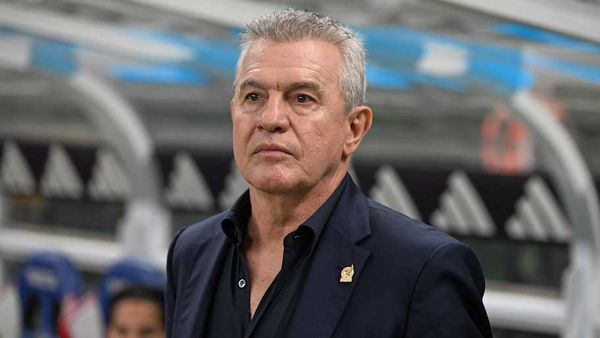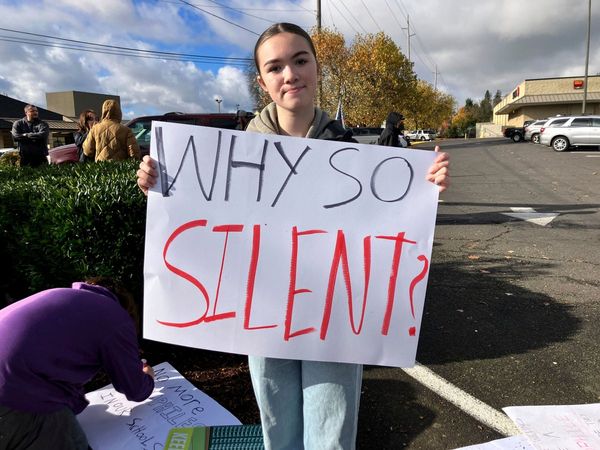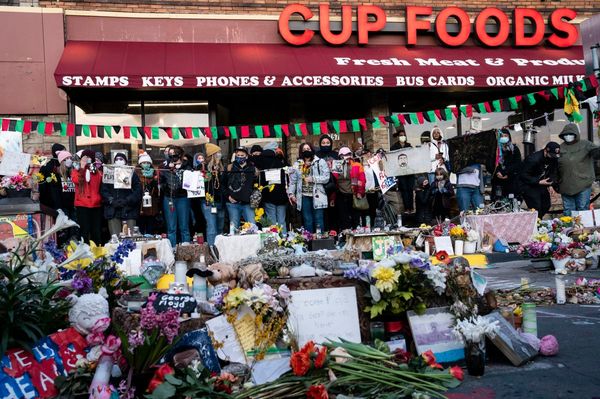
While accountability is the term that has circulated throughout the L.A. Clippers’ organization and coaching staff dating back to training camp, there is a new word head coach Ty Lue and the players are embracing during this playoff run.
At least through 10 playoff games, resilience is becoming the identity of this particular Clippers unit.
In two separate matchups, they have been held hostage by 2-0 series leads – mostly at the hands of incomprehensibly hot shooting from Dallas and Utah, but partly due to their own mistakes and various lineup configurations.
When the Clippers rolled into Dallas with their backs slammed against the wall and their championship hopes appearing bleaker than last year, they answered the bell. Since the moment they trailed 2-0, the Clippers outscored the Mavericks by 52 points across the next five games, winning four of them.
In the proverbial do-or-die moments, L.A. has responded emphatically.
During last year’s second-round series, in the bubble, the Clippers didn’t give off this vibe. They played a bit too comfortably and rarely made game-to-game adjustments. They relied strictly on their talent, and it got the best of them against Denver. After getting punched in the mouth multiple times down the stretch of that series, they never threw a strong counter.
But, this is where Ty Lue thrives, at least historically. He embraces the adversity and being told his team is on the verge of going home.
The Game 7 win over Dallas was the fourth time Lue had coached a team to a Game 7 victory in just five seasons as an NBA head coach. In Cleveland, two of those series also included his team facing a 2-0 deficit. If the Clippers were to come back and win this series, they would not only reach their first ever Conference Finals in franchise history, but they would become the only team to overcome multiple 2-0 series holes in the same postseason.
Lue seems to be ready and willing to tackle these challenges regardless of which team he’s leading.
The Utah Jazz got a taste of how focused and dialed in this year’s Clippers can be during Saturday’s Game 3.
After dropping Games 1 and 2 in Salt Lake City with the Jazz shooting an otherworldly 16-of-25 (64.0%) on pull-up threes in the second game, the Clippers had two things to accomplish when the series shifted to Staples Center. They had to ramp up their point-of-attack defense by not allowing Donovan Mitchell to channel his Steph Curry-esque shot creation, and they had to finally get supreme performances from their two stars, Kawhi Leonard and Paul George.
Against a powerhouse like Utah, who outscored teams by 11.3 points per 100 possessions in non-garbage time minutes this season, having just one of Leonard or George pick up the scoring load wasn’t going to be enough. The Jazz are arguably the most prepared, well-coached, and sophisticated team in the league. You aren’t going to beat them – even in a single game – unless you unload the clip and manufacture ways to attack their defensive gaps.
In Game 1, Leonard and George combined to score 43 points on 13-of-36 shooting on 14 free throw attempts. It was a collective 51.0% true shooting mark for the Clippers’ two leaders – far below league-average.
In Game 2, they combined to score 48 points on 16-of-35 shooting and 13 free throw attempts, giving them a 58.9% true shooting mark. While better, it still wasn’t what the Clippers require in the biggest moments, under the brightest lights, against the best competition.
Yet, in both meetings, the Clippers were right there. They were practically neck-and-neck with Utah in the final quarter and failed to seize control.
Game 1 was tied 79-79 to begin the fourth quarter, and Utah held just a five-point lead with four minutes remaining. The Clippers even cut it to three with 38.4 seconds left, but George and Leonard were suffocated on the final possession and ultimately passed off the game-tying attempt.
Game 2 was just as close, with the Clippers cutting the Jazz’s lead to just 104-103 with 5:35 remaining. A quick 9-0 spurt by Utah was the deal-breaker in that one, as L.A.’s top scoring threats couldn’t stop the bleeding.
Game 3 felt different. It was different.
In a very similar fashion to Game 3 of the last round, when Dallas nearly had them on the ropes, Leonard and George each put their foot down. They weren’t going down 0-3, which would have sparked an unholy amount of reactions and every debate show in America discussing where Leonard should take his talents in free agency.
The Clippers’ two leaders combined for 65 points on 26-of-48 shooting, giving them a 65.3% true shooting percentage. You could argue the number of attempts (48) was the most significant part of the tandem’s breakthrough game. Defeating a high-powered Jazz team, especially one that hunts the most 3-point attempts of any team in NBA history, is a challenging task if your best shot creators are just easing into every game.
“We need it from them every night,” Lue said after the win. “Like I said yesterday, I don’t go to Mastro’s to order the ketchup. I go to order the steak. Tonight, our guys were the steak. That’s what we need. They’ve been doing it for us all season long.”
Aside from his proficient use of a metaphor, Lue nailed it. The Clippers likely pull out one of those two road losses in Utah if their stars actually asserted themselves throughout the game instead of waiting until the deficit was too large to overcome.
“It was a total team win,” Lue said. “We needed every bit of it. Our guys that came off the bench were great. PG and Kawhi really set the tone. PG early (in the game), Kawhi late. And that’s what we need from our two best players, to be able to do that. They set the table for everyone else.”
As Law Murray of The Athletic pointed out, it was the fifth time Leonard and George each scored 30-plus points in the same game since becoming Clippers. They are 5-0 in those games, with two of them coming in the postseason (Game 5 vs. Dallas in the 2020 playoffs was the other one).
With 103 total games and 2,638 minutes logged together since becoming teammates, Leonard and George continue to gain valuable reps on the floor. It has taken some time, but they are finally learning how to be dominant versions of themselves while also feeding off one another.
“They have the trust,” Lue said. “They understand each other. They know how to play off each other now. And we try to stagger them a little bit, as well, so they can both have their own unit.”
Leonard, in particular, reverted back into the same invincible force on Saturday that we saw in the road games versus Dallas.
In the second half alone, his 24 points came on a borderline perfect 10-of-12 shooting with zero turnovers. In those 17 minutes and 40 seconds on the floor in the second half, he showed more poise than he did in all of Games 1 and 2.
Leonard notched his fourth career playoff game with at least 30 points, 10 rebounds, and five assists. Three of those four games have now come as a member of the Clippers, which is truly unbelievable when you consider how absurd his 2017 and 2019 postseason runs were in San Antonio and Toronto.
In all of his second halves to begin this year’s playoffs, Leonard has scored 150 total points on just 96 field goal attempts (1.56 points per shot). This includes Games 1 and 2 in Utah, where he had two very subpar performances. When a series is hanging in the balance, he goes from a normal human in the first half to a robotic machine walking out of the halftime tunnel.
As a whole, the Clippers actually posted their third-most efficient offensive game of the entire season (in the halfcourt). Scoring 126.7 points per 100 halfcourt plays, the Clippers finally broke through and had their best outing of the postseason.
Every time L.A. has logged a 120.0 halfcourt offensive rating or better, they have won – pretty decisively. These are the top 11, including two playoff games so far:

A lot of this falls solely on their ability to, well, convert on the wide-open chances they were botching in Games 1 and 2 in Utah.
In the first two games combined, the Clippers shot a repugnant 9-of-32 on threes with at least six feet of space between the shooter and defender. That’s 28.1%. Good, fundamental offensive process can only take a team so far if the shots aren’t falling to complete the final step.
In Games 1 and 2, Utah was 12-of-28 (42.9%) on wide-open looks from downtown. So, technically, the Clippers’ shot quality was actually better, but not leading to the expected point totals.
Game 3 saw a bit of a correction, as the Clippers cashed in nine of their 17 wide-open threes (52.9%). The Jazz still shot even better, though, going 12-of-22 (54.5%) on uncontested looks from deep.
Completely stopping the Jazz will not be possible for any defense. For the Clippers to crawl back into the series, they had to experiment with a few different things to at least make Utah think and take them out of rhythm.
Mitchell entered Game 3 as the series’ most dynamic performer, cooking defenders with his crafty pick-and-roll manipulation in the first two games. In Games 1 and 2, he noticed how wildly unprepared the Clippers were for his north-to-south burst against their ball-screen coverages, and he was able to put them into the blender regardless of who started possessions on him.
Scoring 82 total points in his first 76 minutes of the series and producing 1.39 points per shot attempt, Mitchell was practically giving the Clippers nightmares.
After the first two games, Lue repeatedly called for his team’s physicality level to increase on both ends of the floor. Defensively, he needed them to play with more aggression in their one-on-one matchups against Mitchell, which would prevent him from breaking the first line of defense and getting into the lane. When Mitchell explodes downhill, that’s when Utah opens the floodgates and starts splashing from everywhere. Offensively, Lue wanted the Clippers to hit Utah with stronger screens, be more assertive on the glass, and actually get out in transition.
Everything starts with limiting Mitchell, the head of the snake for Utah’s offense. It’s hard to generate easier looks in transition when you’re taking the ball out of the net every time, so the Clippers knew it started and ended with a higher defensive focus and better game plan.
For Game 3, that adjustment was obvious: Sending multiple bodies at Mitchell in the halfcourt, and not allowing him to work against the matchups he wants.
The Clippers were instructed to send various traps toward Mitchell to begin the game. There were full-fledged traps when he came off a ball-screen, soft doubles shading him to one side when he crossed halfcourt, and even the occasional “late” double, deep into the shot clock. They tried everything to get him to pass the rock, and it largely worked:
Joe Ingles, one of Utah’s beneficiaries of wide-open looks and the team’s most-reliable playmaker outside of Mitchell, noticed right away how different the Clippers’ defense was in Game 3.
“They turned it up with the physicality and aggressiveness,” Ingles said. “The biggest difference was, they played a lot more small (lineups). They didn’t really play their fives as much. And their double-teams on Donovan ... the blitzing, and kind of the soft blitz when he got over halfcourt, just to get it out of his hands.”
Taking everything they possibly could away from Mitchell in the early going was clearly the top priority, as Lue has been rightfully frustrated by how L.A. has looked defensively to begin playoff games.
Mitchell’s scoring production, by quarter, was something the Clippers would choose to live with on a game-by-game basis:
- 1st quarter: 0 points on 3 shots, no free throw attempts
- 2nd quarter: 16 points on 10 shots, no free throw attempts
- 3rd quarter: 10 points on 8 shots, 5 free throw attempts
- 4th quarter: 4 points on 3 shots, no free throw attempts
Of course, it’s not exactly viable for Mitchell to score just four points in the first and fourth quarters combined as the series goes on. This will likely be an anomaly.
But, if the Clippers can shut off the water on Mitchell just enough at the start of games and bank on their aggressive defensive style to wear him down by the pivotal fourth quarter minutes, that’s certainly a winning formula.
Reggie Jackson, who has become one of the Clippers’ offensive saviors, is typically one of the main targets for opposing guards in the pick-and-roll. He played much better defensively in Game 3, however, and was very transparent after the win about how they chose to defend Utah’s best creator.
“For us tonight, I liked that we held (Mitchell’s) field goal attempts to 24,” Jackson said. “I think guys really came with the mindset of taking the one-on-one challenge that we’ve talked about before. But honestly, we found another way to load up on him. Just try to load up, attack him, and send doubles at times to get the ball out of his hand. We wanted to limit the amount of times he, himself, got to attack and just play one-on-one.”
On the vast majority of these possessions, the Clippers did a terrific job of knowing when to send the extra help Mitchell’s way. If you listen closely here, you can hear Lue telling Nic Batum that he’s “by himself” defending Mitchell on an island ... only to quickly yell for Jackson to sprint over for the late blitz. Watch Lue’s hand movements, too, as he’s guiding the backline rotations once Jackson comes up:
This was one of the Clippers’ genius defensive plays, initially. It forced the ball out of Mitchell’s hands with only six seconds left on the shot clock, and led to a bad shot by Jordan Clarkson. While Clarkson still scored on the put-back opportunity, it showed the major difference in L.A.’s defensive process.
“Just understanding that I haven’t seen a double like that since ... like high school,” Mitchell said. “So for me, just seeing it, kind of feeling the game. They did a good job of it. But for me, it was just trying to find ways to get my teammates involved. I was able to make those plays and make those reads throughout the course of the game, seeing where the double was coming from. And then also flipping it and finding my spots to attack. They are probably going to do it again, so I have to get ready for it and watch the film.”
It wasn’t always perfect for the Clippers and their rotations after the initial double. If the Clippers threw two bodies at him early in the clock, he was making the proper reads and getting rid of the ball quickly.
On this possession in the first quarter, you can see how Utah’s excellent perimeter spacing made it difficult for L.A. to rotate. Once Mitchell is trapped, Bojan Bogdanović wisely “lifts” to the top of the arc. This naturally makes it harder for Patrick Beverley to split the difference (or, play two) on the weakside, and Mitchell is able to choose between Bogdanović or Clarkson as the release valve:
He hits Clarkson in the corner with a skip pass, right in the shooting pocket, and the Clippers surrender three points off the hard double. This play was reminiscent of what Dallas did to the Clippers in the first two games in the opening round.
“I thought we made some mistakes when we did fire at him,” Lue said. “But, we were just trying to cover for one another. Not leaving a guy on an island. Let’s try to make him play in a crowd, which we did. A couple of rotations we messed up on. The biggest thing, and the point of emphasis, was to make sure we handled Donovan tonight. No easy baskets. He earned pretty much everything he got tonight.”
The Clippers really threw the kitchen sink at Mitchell when he tried to get into the lane with dribble penetration. There were rarely any gaps for him to exploit, and Leonard was constantly searching for opportunities to force turnovers through jumping passing lanes or simply plugging the holes when Mitchell wanted to drive:
Still, it wasn’t as if the Jazz failed to execute offensively the whole night. Saturday was just the eighth time in NBA history both the winning and losing team made 19-plus threes in a single playoff game.
Utah managed to shoot 16-of-34 (47.1%) on their above-the-break threes, while also going 3-of-7 from the corners. The opportunities were still present for them. They just weren’t as nuclear and automatic as they were in the second half of Game 1 and the entirety of Game 2.
However, in the first half of Game 3, it definitely felt as if the Clippers capitalized on all of Utah’s (untimely) misses after they blitzed Mitchell, and that’s what allowed L.A. to carry a 15-point lead into the break.
“I think we missed a few easy ones,” Mitchell said. “That’s definitely tough. If they want to throw a double, that’s fine, I have no problem getting off the ball. I told you guys the other day, we all trust each other to make plays and make shots. Tonight, we didn’t really make them pay for doubling. At the end of the day, that’s what it comes down to. We didn’t get stops, either, which kind of compounds that. They did a good job. They raised their level. For them, it was not going down 3-0. That was their mindset.”
One of the other adjustments Lue made was going back to his small-ball starting lineup, replacing Ivica Zubac with Nic Batum.
It wasn’t just a defensive-minded switch, as Batum allows them to be more versatile on that end and eliminates a big-man target for Utah to search for every possession.
The move also enabled the Clippers to play with greater space and more room to operate, penetrate, and get Utah moving around. As this possession early in the first quarter appeared to be dead, watch how one skip pass to the corner (as Morris is playing the five) forces Gobert to rotate and close out to the perimeter:
Once Bogdanović was a second late rotating back to the wing, George knew his window was right there. He seized it by getting the step on Bogdanović, and beating Gobert back to the rim. This type of spacing just isn’t as frequent if Zubac is on the floor, as Gobert doesn’t have to leave a certain radius and guard on the perimeter.
The small-ball starting group of Jackson-George-Leonard-Batum-Morris played 17 minutes in Game 3, and no other lineup saw the floor for more than four minutes.
With Batum on the court through 10 playoff games, the Clippers have a robust point differential of plus-92. When he’s off the court, it falls off a cliff to minus-39:
Facing another must-win scenario, Lue understood it was time to play to the Clippers’ strengths and not fiddle with lineup arrangements as much as he did in Utah.
In many ways, this series has felt close to the first three games of the opening round. After it appeared L.A. got exposed once they went down 2-0 in both series, the mood after Game 3 seems to be that Lue and the Clippers have figured out a few things – while also getting some shooting luck on their side.
The Jazz are a much more powerful team than Dallas, though, and this will inevitably require the Clippers, notably Leonard and George, to not take their foot off the pedal for a single moment if they hope to keep this run alive.
Considering how resilient L.A. has been in the Ty Lue era, with the team adopting his identity from the old Cleveland days, this might just be the type of mental and physical test they need.







